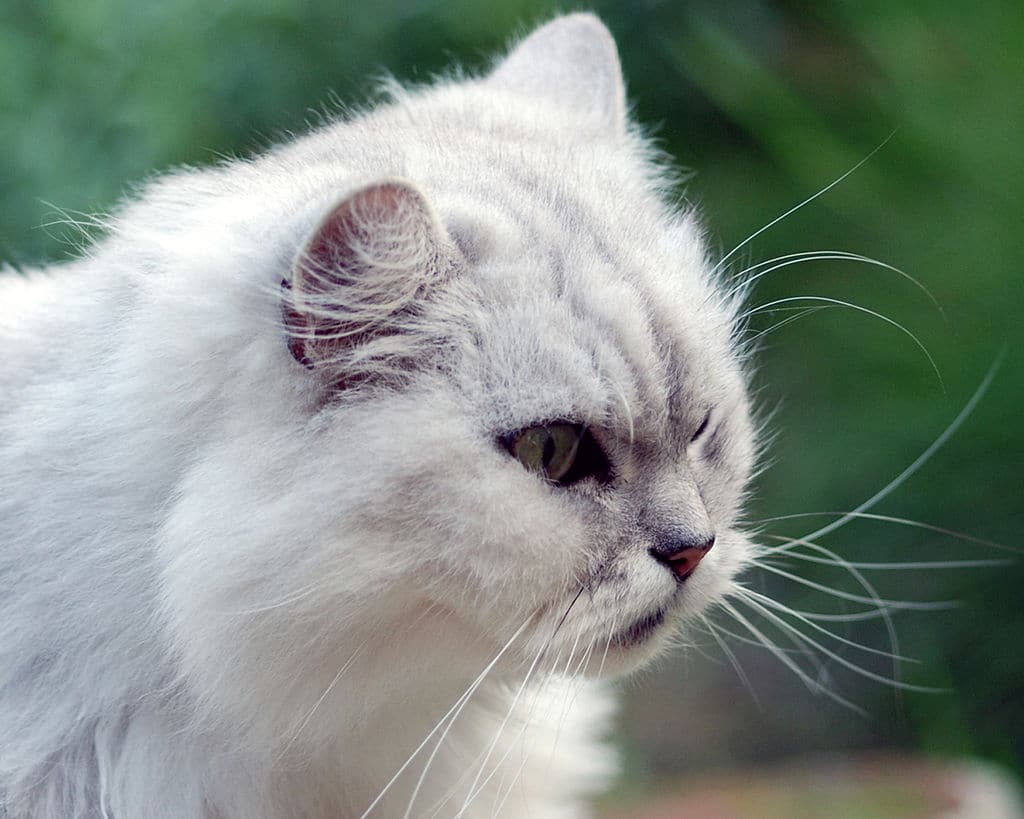
Protein. Dietary protein supplies essential amino acids and is needed for the manufacture of antibodies, enzymes, hormones, tissues, and proper pH balance. Protein provides energy for cats and is essential for growth and development. Complete proteins contain ample amounts of essential amino acids and are found in foods such as meat, fish, eggs, and poultry. Incomplete proteins do not provide all essential amino acids and are found in many foods including legumes, grains, and vegetables. Plant proteins don’t supply the essential amino acids that a cat needs, such as taurine which come from animal protein. Cats need protein from animal sources as the amino acids from vegetable sources are not well utilized. Overall, cats have a very high requirement for protein.
Fat. Dietary fat is a concentrated source of energy for the cat. It also provides essential fatty acids and aids in nutrient utilization and transportation. Fat is involved in cell integrity and metabolic regulation. Saturated fat is found primarily in animal sources while polyunsaturated fat is found mostly in plant sources.
Linoleic and arachidonic acids have long been considered to be essential fatty acids (EFAs) for cats. More recently, DHA has been added due to its important contribution to feline vision, reproductive health, and the immune system. EPA may also be of benefit. Unlike some animals, cats do not efficiently convert plant sources of EFAs to the needed derivatives. For example, cats must eat meat to obtain arachidonic acid. Also, cats do not convert LA to GLA (as some animals do), but studies show that GLA can benefit feline skin and coat health. The cat would also consume Omega 3s and CLA when eating its natural herbivorous prey.
Minerals. Minerals are essential to the cat and are involved in almost all physiological reactions. They contribute to enzyme formation, pH balance, nutrient utilization, oxygen transportation, and are stored in bone and muscle tissue. Biological availability may vary widely depending on the source of the mineral. Elemental minerals are generally taken from the earth or water. Chelated minerals are those that are bound with other organic substances often making them easier for the body to absorb. Minerals include calcium, chloride, chromium, cobalt, copper, fluorine, iodine, iron, magnesium, manganese, molybdenum, phosphorus, potassium, selenium, silicon, sodium, sulfur, and zinc. There are other mineral elements required by cats at trace concentrations. Minerals, like vitamins, work synergistically. They have a cooperative action between them.
Vitamins. Vitamins are essential for metabolism regulation, normal growth and function. Vitamins are found in food and some are synthesized within the animal’s body. They’re classified as either water- or fat-soluble. Fat-soluble vitamins include A, D, E, and K. Water-soluble vitamins include C and the B-complex. Generally, fat-soluble vitamins are stored in the body, while water-soluble vitamins pass through more quickly. Once again, the carnivorous cat utilizes animal sources of nutrients more readily than plant sources. For example, cats cannot convert beta-carotene from plants to vitamin A (as some animals do), so they need preformed vitamin A from an animal source. Preformed vitamin A needs no conversion.
Water. Because cats are designed to fulfill most of their water requirements by eating fresh raw food, they naturally have a low thirst drive. This can lead to health issues for cats that eat dry cat food products and treats. One of the problems is that even though they become dehydrated eating the kibble, their natural “programming” may not encourage them to drink more water. And their urine can become too concentrated. Even though a healthy cat doesn’t drink much, you should always have clean good quality drinking water available to them. And please make sure it’s good quality water, which means tap water may be out, especially if your community puts fluoride and chlorine in the water supply. If you have well water, have it tested annually for contaminants.




